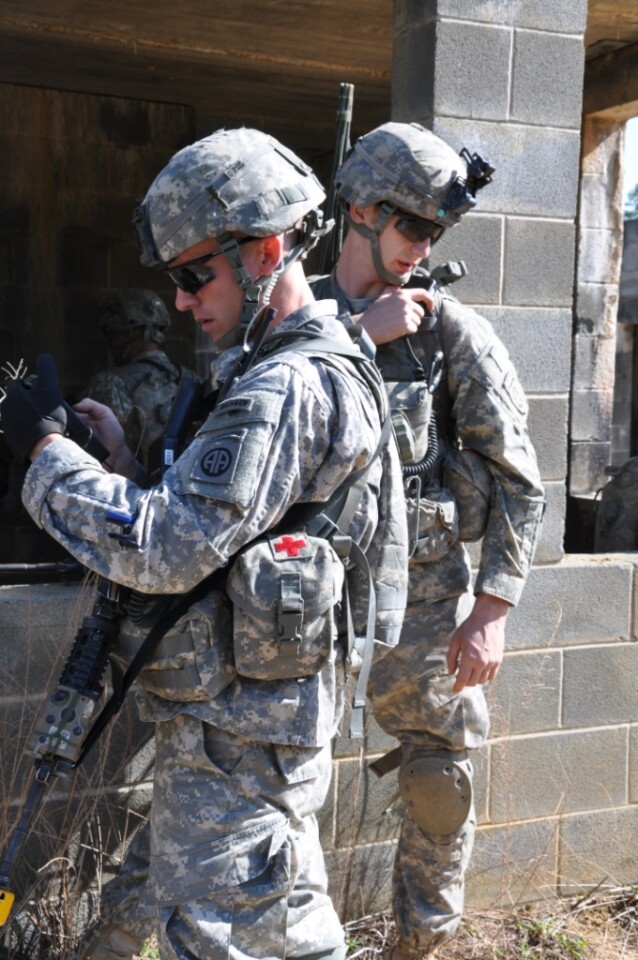U.S. paratroopers from the 82nd Airborne Division recently took part in a field exercise at Fort Bragg, North Carolina, in which they experimented with a tool not normally used by the armed forces – a smartphone. And no, they weren't playing Farmville. Instead, they were using custom phones running custom apps, to coordinate the swarming of a mock village and the capture of a high-value target. Judging by how the exercise went, smartphones could soon be showing up on battlefields everywhere.
The phones were ruggedized Android-based prototypes developed specifically for the project. They were plugged into the soldiers' tactical radios, combining the capabilities of both technologies. Running on the phones were two apps – Joint Battle Command-Platform, or JBC-P Handheld, and Tactical Ground Reporting, or TIGR Mobile.
JBC-P displays a map of the battlefield, using GPS to indicate the locations of friendly forces, enemies, and landscape hazards in real time. TIGR allows soldiers to send photos back and forth, and swap historical information relevant to the operation.
"What I watched with interest today was the ability to take pictures of high-value targets, immediately provide them to the company or to the battalion command post," said General Peter Chiarelli, the Army's vice chief of staff. "I saw the ability when a soldier is wounded to take a picture of the wound and to pass that to the doctors, so that medics can make sure that they are treating the soldier in the appropriate way, given the wound that he has received."

The phones also allowed soldiers to coordinate their movements more smoothly than would otherwise be possible, without having to yell their positions out to one another. "I don't have to radio back to the truck to see where another squad is at and where they're moving to. I can just pull out my phone and look at it," said Specialist Randy Fite. "Usually I'm running to my guys, running back to the squad leader, running back to my guys, relaying information. This way, it's just right there on me."
Given that troops presumably wouldn't want to be thwarted by coverage limitations, the phones communicated using the WIN-T secure terrestrial network provided by the soldiers' HMS Manpack and Rifleman radios. The network allowed troops to share information with one another in the field, and with the battalion tactical operations center. WIN-T also links up to a secure satellite connection, to keep the higher-ups at headquarters in the loop.
The tactical smartphone initiative is a project of the Joint Program Executive Office for the Joint Tactical Radio System, or JPEO JTRS, and Program Executive Office Command, Control and Communications - Tactical, or PEO C3T.






